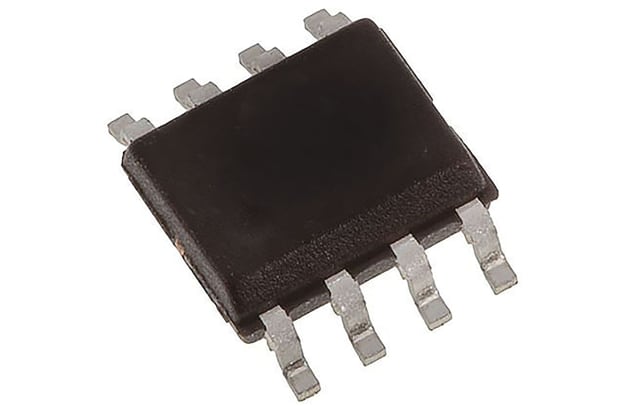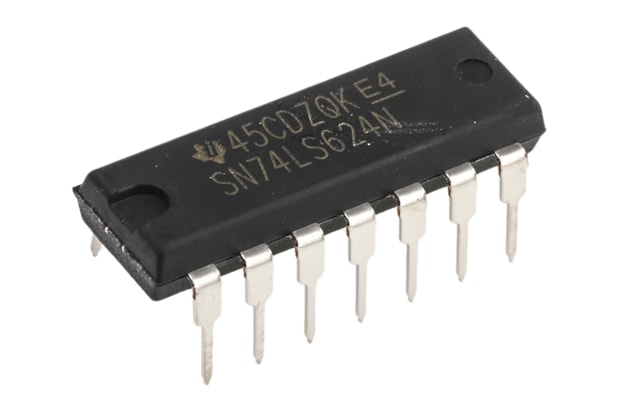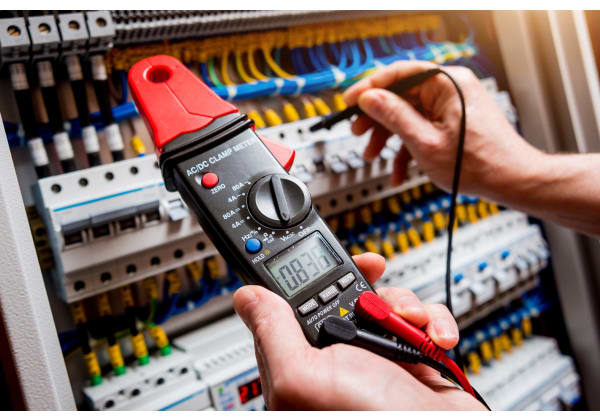- Published 9 Feb 2023
- Last Modified 29 Aug 2023
- 6 min
A Guide to Voltage Controlled Oscillators

Reviewed by Jay Proctor, Technical Support Team Leader (March 2023)
Voltage controlled oscillators (VCOs) play a critical role in many electronic systems, from simple timers to sophisticated frequency synthesisers. These devices generate an output signal that is proportional to an input voltage, making them versatile and highly adaptable to a wide range of electronic applications.
This guide will take a comprehensive look at voltage controlled oscillators. This includes their basic circuit design, different types of VCOs, and examples of how they are used in electronic circuits.
What is a Voltage Controlled Oscillator?
A Voltage controlled oscillator (VCO) is an electronic device that generates an output signal with a frequency that is proportional to an input voltage. The input Voltage is used to control the frequency of the output signal, making VCOs ideal for applications where the frequency of the output signal needs to be dynamically adjusted. VCOs are commonly used in a wide range of applications, including frequency synthesis, signal modulation, and pulse generation.
VCOs can be designed to operate over a wide range of frequencies, from a few kilohertz to several gigahertz. The frequency range of a VCO is typically determined by the components used in the resonant circuit and the amplifier stage. VCOs can also be designed to produce either square waves, triangular waves, or sine waves, depending on the requirements of the application.
Voltage controlled oscillators are widely used in radio frequency (RF) and microwave applications, such as in radio transmitters and receivers, radar systems, and wireless communication systems. They are also commonly found in embedded systems, such as microcontrollers and digital signal processors, where they are used for timing and frequency synthesis.
Voltage Controlled Oscillator Circuit Design

The basic design of a Voltage controlled oscillator typically consists of a resonant circuit that is driven by an amplifier. The resonant circuit, typically a tuned LC circuit or an RC circuit, generates the output signal. In turn, the amplifier magnifies the output signal to produce a larger output voltage.
One of the key features of Voltage controlled oscillators is the linear relationship between the input voltage and the output frequency. This relationship can be described by a transfer function. This is a mathematical expression that describes how the output frequency of the oscillator varies with changes in the input voltage. The transfer function is typically specified by the manufacturer and is used to predict the output frequency of the VCO for a given input voltage.
An Example of Using a Voltage Controlled Oscillator with an Op Amp
One of the most common ways to implement a Voltage controlled oscillator is to use an operational amplifier (op amp) as the amplifier component. An op amp is a type of integrated circuit that is commonly used as a high-gain amplifier.
With a Voltage controlled oscillator using an op amp, the input voltage is applied to the non-inverting input of the op amp, and the feedback network is connected between the output and the inverting input. The resonant network is adjusted to determine the output frequency. In this type of Voltage controlled oscillator, the op amp is used to amplify the output signal of the resonant circuit.
An Example of a Voltage Controlled Oscillator with a 555 Timer
Another common way to implement a Voltage controlled oscillator is to use a 555 timer as the amplifier component. The 555 timer is a popular, versatile integrated circuit that can be used for a wide range of applications, including Voltage controlled oscillators.
In this configuration, the 555 timer is used to generate the output signal by controlling the on-time and off-time of a transistor switch. The input voltage is applied to the control pin of the 555 timer, and the resonant network is connected between the output and the discharge pin. The output frequency is proportional to the input voltage, and the resonant network is adjusted to determine the output frequency.
Voltage Controlled Oscillator Tutorial

This section provides a basic tutorial on how to use a Voltage controlled oscillator. The following steps are involved in setting up a VCO circuit:
- Determine the desired output frequency range and the required input voltage range. The output frequency range should be chosen based on the application requirements. The input voltage range is determined by the range of the control voltage that will be applied to the VCO
- Choose a suitable resonant network based on the desired frequency range and the input voltage range
- Choose an amplifying stage based on the input voltage range and the desired output signal level
- Choose an output stage based on the desired output signal level
- Connect the resonant network, amplifying stage, and output stage to form a complete VCO circuit
Harmonic Oscillators
A harmonic oscillator is a system that oscillates with a sinusoidal waveform, meaning that the output signal varies periodically and repeatedly over time. The term harmonic refers to the fact that the waveform of the oscillation can be expressed as simple harmonic motion.
Harmonic oscillators are characterised by a simple relationship between the output signal and the input voltage. In this relationship, the frequency of the output signal is proportional to the amplitude of the input voltage. This relationship makes harmonic oscillators ideal for a wide range of applications, including frequency generation, signal modulation, and pulse generation.
In many electronic systems, harmonic oscillators play a crucial role as the primary frequency-generating component. They are often used in conjunction with Voltage controlled oscillators to supply a stable and accurate output signal for other electronic circuits. Whether you're designing a simple timer or a complex frequency synthesiser, understanding the basics of harmonic oscillators is essential.
Linear Harmonic Oscillators
Linear harmonic oscillators are systems that oscillate with a sinusoidal waveform. These systems are typically characterised by a spring-mass-damper system, where the spring stands for the restoring force, the mass stands for the oscillating object, and the damper is the frictional force.
Dampened Oscillation
Dampened oscillation is a type of oscillation that occurs when the amplitude of the oscillation decreases over time. This type of oscillation is often seen in physical systems that are subjected to frictional forces, such as dampers or friction elements.
Relaxation Oscillators
Relaxation oscillators are a type of VCO that use a simple switching mechanism between two stable states to generate an oscillating signal. Unlike harmonic oscillators that produce sinusoidal waveforms, relaxation oscillators generate square or rectangular waveforms. Relaxation oscillators are often used in electronic circuits for timing and pulse generation. They are also commonly found in applications such as timers, oscillators, and switches.
The basic components of a relaxation oscillator are an amplifying stage, a comparator, and a capacitor. The amplifying stage is used to amplify the input signal and drive the comparator, which compares the input signal with a reference voltage. If the input signal exceeds the reference voltage, the comparator switches its output state, charging or discharging the capacitor.
As the capacitor charges or discharges, its voltage changes, causing the input signal to the comparator to change, which in turn switches the comparator's output state. This process repeats continuously, generating an oscillating signal at the output of the comparator. The frequency of the oscillating signal depends on the time constant of the switching elements. The amplitude of the oscillation is proportional to the size of the input voltage.
Relaxation oscillators are relatively simple to design and implement, making them a popular choice for many applications. However, they have some disadvantages compared to harmonic oscillators, including lower frequency stability and lower spectral purity. Additionally, the waveform generated by a relaxation oscillator is not a pure sine wave, which may limit its use in some applications.
One of the most commonly used relaxation oscillators is the Astable Multivibrator, which is a regenerative switching circuit. This is because they are simple, reliable and easy to construct with a constant square wave output.


